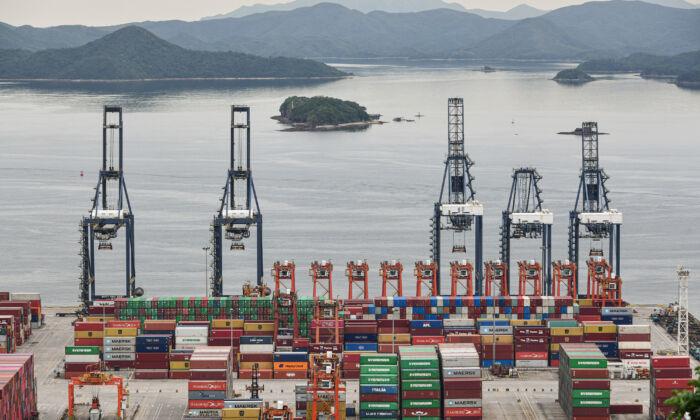If the United States wants to recapture its former economic strength, it'll need more workers and to find ways to make all workers more productive.
Innovation doubtlessly will continue to improve worker productivity, but given the low birth rates of past decades, immigration is the only way to get additional needed workers. However, there are better ways to do this than today’s chaos on the southern border.
The United States has always relied on productivity-enhancing innovation to spur the pace of growth and development. At least half the impressive growth of the past 70-something years sprang from this source. In the 1950s and 1960s, advances in aerospace, miniaturization, and communication, as well as the beginnings of computerization and the first introduction of robotics into production processes enhanced worker output per hour. In the 1970s and 1980s, the widespread application of computers into the workplace did the same, as did more sophisticated robotics and still more impressive advances in communication. Productivity in the 1990s and early 2000s got a lift from the introduction of PCs and their connection to the internet.
Although there’s every reason to expect that something new will come along to support the pace of economic growth in the coming years and decades, these technologies can’t be forced. As has always been true, they come from the trial-and-error process of millions of independent actors. The best policy approach is to allow room and financing for innovators.
Government support can help but only up to a point. In the past, the government has had, at best, a spotty and often inadvertent role. The space race developed miniaturization to decrease the weight of rockets. The tremendous commercial applications came from others. When the Defense Advanced Research Projects Agency invented the internet, it was for defense. Others found the stupendous commercial and productivity applications.
If there’s only so much that official policy can do to advance the pace of productivity-enhancing innovation, there’s considerable potential for immigration reform. The CBO projections outline the extent of the problem.
During the rapid growth period of the past, the nation’s workforce grew by some 1.2 percent per year. In the early part of the period, the flow of veterans from World War II and the Korean War added huge numbers to the workforce. In the 1960s and beyond, the maturation of the huge post-war baby boom provided an impressive flow of new workers. But falling birth rates since the 1960s have slowed the flow of native-born workers to a trickle. Immigration has become essential. Without it, the CBO estimates that the nation’s labor force will grow by a mere 0.4 percent per year.
But not every sort of immigration is as economically useful as another. The economy responds best to a flow of skilled people and those with the language skills to learn quickly. Such immigrants not only add a productivity enhancement to the raw labor they bring, but they also help other workers improve their skills. The chaos at the border offers little of this sort of help. Undoubtedly, some involved there possess desirable talents, but that’s purely accidental. The economy needs something more reliable.
In this, Canada and Australia offer useful models that might guide this country’s immigration reform. Both of these other immigrant countries use what might be called a point approach. Potential migrants get points for levels of education, language skills, the lack of a criminal record, and work skills—for example, machinists, pilots, welders, railroad engineers, and the like. Once an applicant has enough points, he or she immediately receives a work permit and, with his or her family, gets permanent residence. These people enter the country as productive taxpayers who impose no burden on social services and may even enhance the skills of those around them. If the United States adopted such an approach, it would likely see less resistance to immigration than today from the existing population.
Even a perfect immigrant flow—if such a thing were possible—couldn’t guarantee that the United States would recapture its former rapid rate of growth. But reform of its present arbitrary and impenetrable immigration system would surely increase the likelihood of such growth to benefit the immigrants and the population at large.





